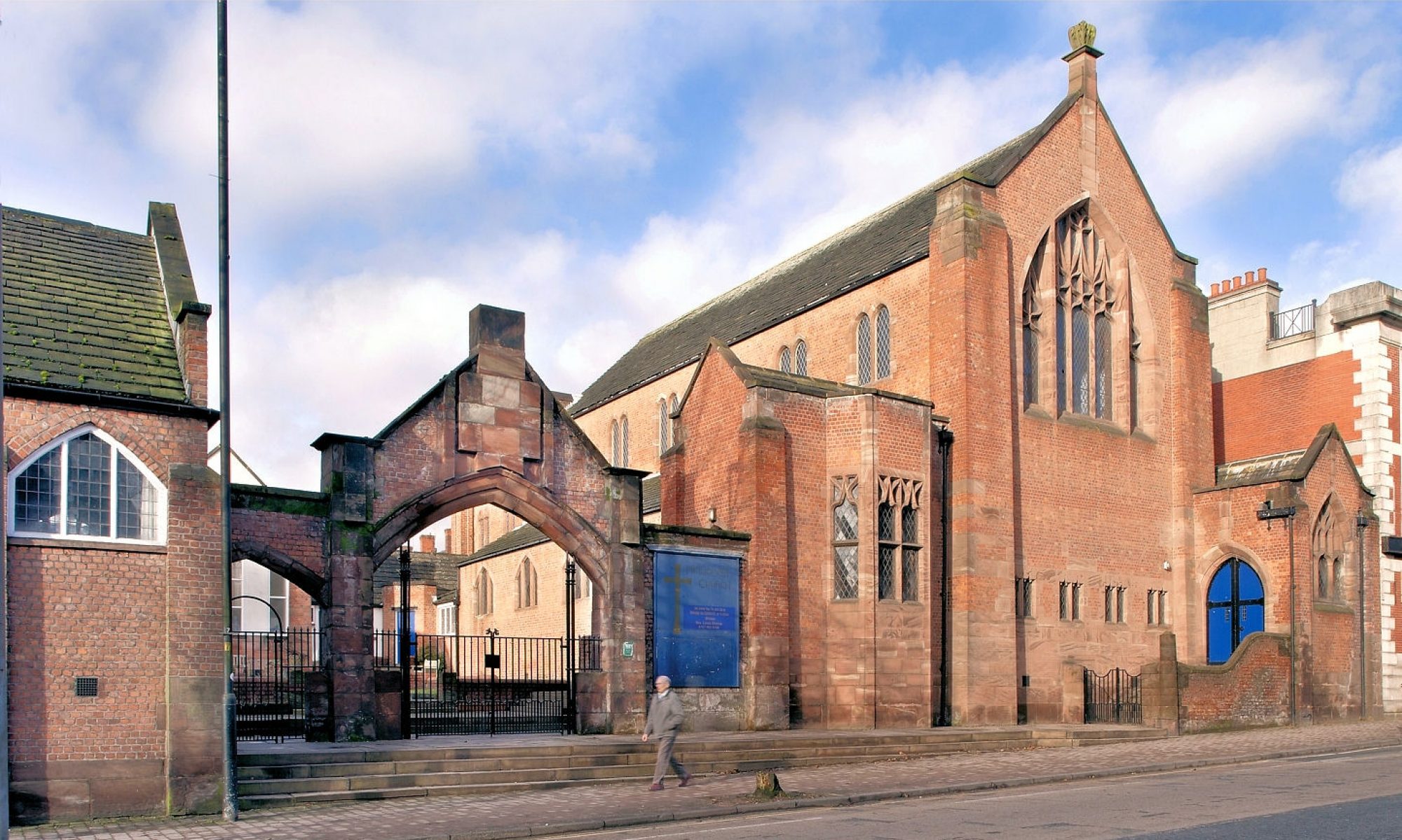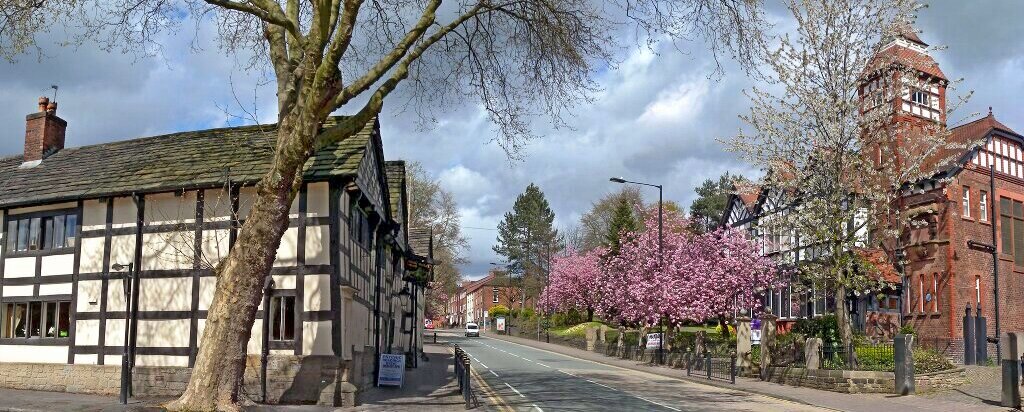Long Street looks lovely in spring with the Jubilee Library cherry blossom out and the trees coming into leaf. This panorama shows how Middleton’s Jubilee Library was designed to respect the timber-framed Old Boar’s Head. The library is an early and unusual Arts & Crafts design and there is only one other listed Arts & Crafts library in England of such an early date.
The official architect was Laurence Booth of Bury who won the competition for designing the library. However, he built nothing like it before or afterwards. Instead, the building is in Edgar Wood’s early Arts & Crafts style (he was aged 29 in 1889).
Edgar Wood’s father and his main client (Schwabe) were the two principal funders of the library and many of the other large funders were also Edgar Wood clients. We think that Laurence Booth was a front to hide Edgar’s involvement as he could not have fairly competed and it would have have been controversial for him to do so. There are many clues in the surviving records that this was the case and that Edgar Wood was indeed the true designer.
In this way, Edgar Wood appears to have designed the town’s first public library creating a state of the art design some ten years before Arts & Crafts architecture began to take off. Consequently, the Library is now firmly on the Edgar Wood heritage trail!
Edgar Wood’s avant garde buildings were very contentious locally and he had to take a very low profile in the design of publicly funded buildings. Similar methods were used to hide his involvement in the design of Long Street Methodist, the Arts & Crafts Church, when he was only revealed as architect at the last minute in December 1898 after all the decisions had been made. Likewise, he was hidden from view in the restoration of the Parish Church and, as one of the leading town planners of England, we also think he was the hidden designer of Alkrington Garden Village. The official designer, Thomas Adams, would have known Edgar as they were both involved in Letchworth Garden City, Hertfordshire.
The Library is full of Arts & Crafts features, like the traditional pegged oak construction used for the timber work (which Mr. Booth complained about!). The reinforced concrete construction of the first floor is another Arts & Crafts experimental feature. Blending traditional handicrafts with modern methods like reinforced concrete were very much Edgar Wood’s approach. Later on, he became famous for his flat concrete roofs and for pioneering modern design.
CLICK HERE to enlarge the photo.


